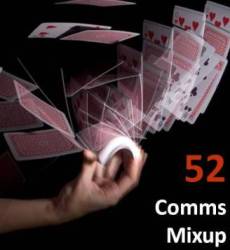Influence is one of those raise-your-hand topics. As in, when you mention it online or offline, every person raises his/her hand because everyone has an opinion. That’s not a bad thing. The first time I heard someone mention influence, it was about as clear to me as William Shakespeare was the first time I read it. But once you’ve be’d, not be’d, done some research on the topic and developed a better understanding, how do you explain influence to a person who has never had a reason to understand it — a person like your client’s CMO?
Someone once told me a great leader doesn’t just understand intricate things, but is able to make them understandable to folks all across the spectrum. If that’s the case, I need some leadership 101 when it comes to defining the value of influence. Or at least I feel that way sometimes when discussing it with clients. Here are some of the folks I’ve learned from in the past few days when it comes to influence:
- Todd Defren took a stab at the measurement topic earlier in the week. I really liked his post because he shared a client’s POV on measurement and then asked for the best PR measurement formula. What he got was several different answers and more evidence that there’s no universal approach to addressing this topic with clients.
- Chuck Hemann always shares the sunny weather in Austin when it’s snowing here in KC. He also always has an interesting perspective on measurement and influence. Including this one on building your own PR measurement index for your clients. Chuck is smart, and his idea of weighting metrics got me thinking.
- Valerie Simon took a shot here at the value of influence. She nails a couple of points that make influence hard to explain — a brand’s influencers are always changing and there is no such thing as universal influence. Not even Lady Gaga. Or is there?
Todd, Chuck and Valerie all shared smart advice. But I’m still struggling to find the best way to explain influence to leadership. Imagine a CMO with a scorecard in her hand. On the paid media side, it says “1 million guaranteed impressions.” On the earned media side, it says “successful outreach to 25 influencers.” How do you best explain why the size of the number doesn’t always matter?
That said, here are eight questions I’ve been thinking about when it comes to explaining the value of influence. I have an opinion on every one of these. But I don’t pretend to have the answer for any of them. I would love to hear what you think:
- How do you compare targeted influencer outreach to mass tactics? How do you explain the value behind targeting?
- What process do you use for IDing influencers? Do you share that process with clients when trying to differentiate this type of outreach?
- Your client asks you to put influencers into a scorecard. How would you go about doing it? Have you ever used a weighted index like Chuck describes in his post?
- Would you ever rank influencers? Do you think it helps to show the value of your outreach versus other outreach methods? Media buys?
- What metrics do you focus on when discussing influencers? Have you ever reported a metric like relationships built or brand ambassadors? What other metrics are key?
- If you could tell one story to highlight why influencer outreach is a tactic your client should consider, what would it be?
- I’m a CMO and I say: “I love the story in this influencer blog placement, but the rank and authority (Technorati) and Klout scores were fairly low. And only a few thousand people visit that blog site every month.” Your response is?
- Is there such a thing as universal influence?
These are the questions that make me shake my head because the answers seem so clear in my mind. But when I try to explain them, I don’t always make them as clear for the person to whom I’m talking. I’ve got a take I’m happy to share. But lately I feel like my POV on this topic sometimes comes out as confusing as Willy’s Old English.
Imagine you’re the teacher and influence is this century’s Hamlet. What’s your take? How are you going to help the class understand the plot and the true meaning of the story?













[...] Justin Goldsborough had a great post yesterday on eight questions to help explain influence. [...]